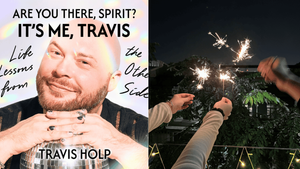Nine million. That's my estimate for how many Americans identify as lesbian, gay, bisexual, or transgender -- about 3.8% of the adult population. Clearly, for many LGBT people, that number is more than just a statistic.
A recent story in The Advocate citing the estimate prompted a response in the comments section from famed author and advocate Larry Kramer, who challenged my analysis, stating, "The question to me has always been why Gates ... wants to punish us so."
For the record, my study actually posited three estimates: 9 million adults self-identify as LGBT, 19 million (8%) report same-sex sexual encounters, and nearly 26 million (11%) acknowledge some same-sex attractions. I argue that all three figures are components in accurately estimating the size of the LGBT population. Nevertheless, that 9 million figure unleashed powerful angst.
When the study was first published, prominent gay bloggers and their followers labeled me "irresponsible," hailed one critique of my work as a "great takedown," and even compared me to the Nazis. That's quite a bit of emotion attached to a number, and it certainly constitutes the strongest reaction I have ever received to any of my publications.
The history of the LGBT community demonstrates just how important "the" number is. A figure of 10%, still often cited today, originated in an obscure passage about male same-sex experiences within a book by prominent sexologist Alfred Kinsey, who made no attempt to estimate the size of the LGBT population. Early LGBT activists latched on to this percentage: large enough to matter and small enough to not frighten a general public still threatened by the mere existence of LGBT people.
And they were right to do so. Countless LGBT people, myself included, derived comfort and strength when we looked at a room filled with a hundred people and thought, Wow, there are nine other people here like me. It also gained political traction, helping to change the perception of LGBT people as a fringe group of sexual deviants to a minority group subject to discrimination and worthy of legal protection.
LGBT Americans live in a very different world today than at the time of the Stonewall riots or in the early days of the HIV epidemic. Today, federal law prohibits hate crimes against LGBT people and the Supreme Court has declared sodomy laws unconstitutional. Same-sex couples can marry in Iowa, synonymous with America's heartland, along with five other states and in the nation's capital. LGB people will very soon be serving openly in the U.S. military. Houston has a lesbian mayor, and an openly gay man was recently confirmed by the Senate as a federal judge. As Larry Kramer and many LGBT activists still frequently point out, LGBT people are far from full equality in this country. But remarkable progress has been made.
That progress can be linked to the decision by millions of LGBT people to come out of the closet and live their lives openly. Today, surveys show Americans encounter LGBT people in virtually all parts of their lives. They are no longer some abstract "other" in the fabric of American society.
Today, the evidence suggests that Americans care little about how many LGBT people there are. After all, even at 9 million, the LGBT population would be larger than the individual populations of 40 states and comparable to the combined populations of Jews and Mormons in this country. If anything, Americans substantially overestimate the size of the LGBT populace. A recent Gallup poll found that the average American thinks that 25% of the population is LGBT.
While most Americans don't appear to care much about the size of the LGBT population, they do, however, care about their lesbian aunt, their bisexual friend, and their transgender classmate. Knowing someone personally who is LGBT is one of the best predictors of general support and concern for LGBT people and causes.
Throughout this summer, the U.S. Census Bureau has been releasing new tabulations of same-sex couples who identified themselves as spouses and partners in the 2010 Census. Newspaper articles from Bozeman, Mont,, to Orlando, Fla., have reported on the data. In most cases, the new numbers provide the context for sharing the personal stories of same-sex couples who have lived in those communities for years. Census 2010 data confirms the lived experience of most Americans today: There is no place in the U.S. where same-sex couples can be said to be invisible.
What matters most is not what Census data reveals about the size of this population but what it tells us about the lives and the needs of many within the LGBT community. For example, Census Bureau data shows that African-American, Latino, and Latina same-sex couples are more than twice as likely as their white counterparts to have children. Many of these families with children are economically challenged and live in areas with few legal protections for their families. While several states consider prohibiting LGBT people from adopting children, Census Bureau data shows that adoption among same-sex couples has nearly doubled in the last decade.
Census data also reveals that the proportion of individuals in same-sex couples who are age 55 or older has increased by 60%, suggesting much greater visibility of LGBT seniors in the future. The many concerns of aging baby boomers are now becoming LGBT concerns. These are numbers that matter: They counter stereotypes and provide critical information about the challenges LGBT Americans face.
Soon questions about sexual orientation and gender identity will be added to the nation's major health surveys, arguably a turning point in efforts toward full LGBT inclusion in federal data collection. According to a Department of Health and Human Services fact sheet, the new data will "serve as powerful tools and help us in our fight to end health disparities." The world has indeed changed. It no longer really matters if we count 9 million or 30 million LGBT Americans. What matters is that the lives of America's LGBT family, friends, and neighbors are finally beginning to count.
GARY J. GATES is the Williams distinguished scholar at the Williams Institute at the University of California, Los Angeles, School of Law and a coauthor of The Gay and Lesbian Atlas.




































































Charlie Kirk DID say stoning gay people was the 'perfect law' — and these other heinous quotes